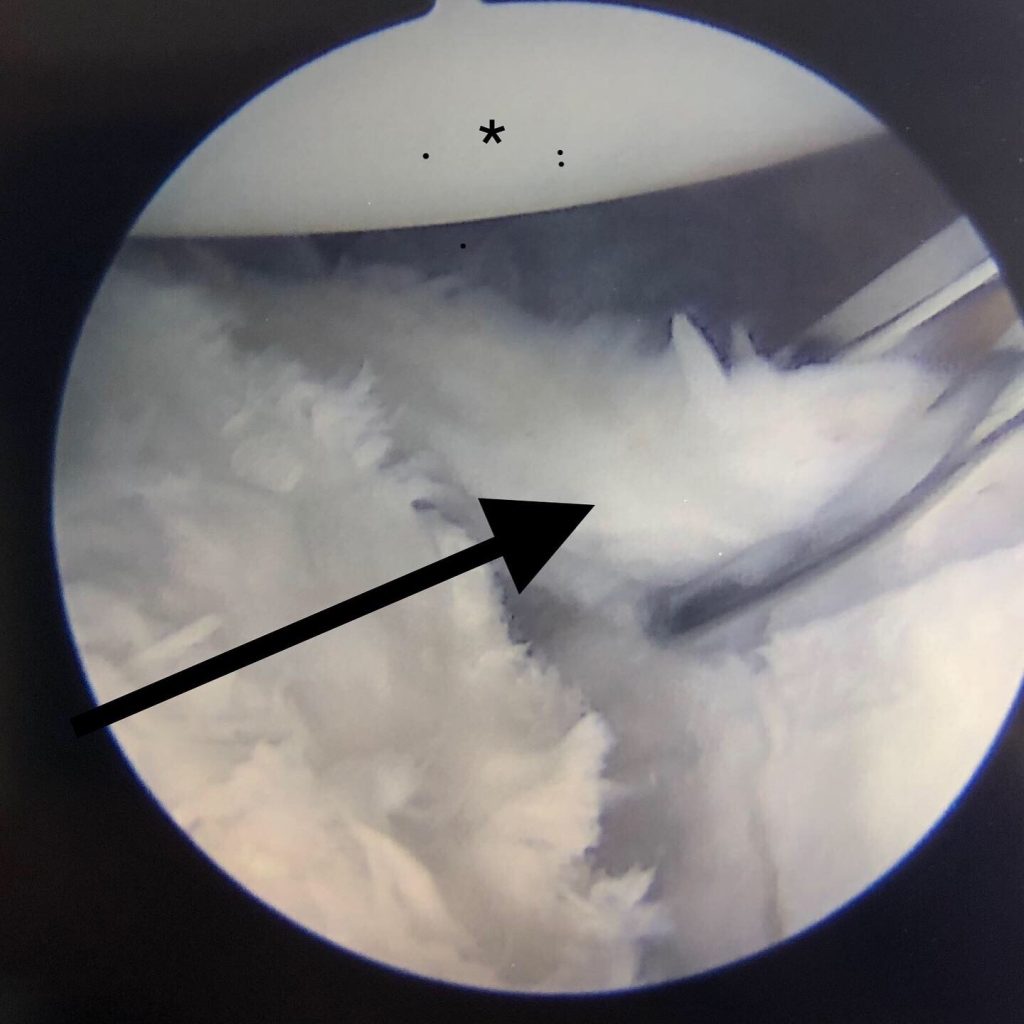23 Feb How to Recover from a Dislocated Shoulder

Imagine this scenario…
You’re running down the field on your way to a touchdown. One more player to block and you are going to score! As you move your arm to shove aside the defender, you feel it gets pushed back hard. There is a sudden pop, then a burst of pain. Your arm goes numb as you fall to the ground way shy of the end zone. What happened?
You have likely suffered a shoulder dislocation.
WHAT IS A SHOULDER DISLOCATION?
Shoulder dislocations occur when the head of the humerus (the long bone of the upper arm) comes out of the glenoid (the socket) of the shoulder. While there is a similar condition called shoulder separation, which involves the AC joint, (a small joint at the end of the clavicle), they are unrelated.
Most shoulder dislocations are anterior or “out the front.” They often occur when falling onto an outstretched hand commonly with the arm behind you. When the shoulder dislocates, something gives or tears to let it happen (with the exception of people who have severe ligament looseness – a discussion for another day).
In the under-40 crowd, it’s usually the ligament that tears, along with their attachment to the labrum. Unfortunately, after reduction, this damage usually doesn’t heal, which leads you to get patients with high recurrence rates. In most patients over 40, the rotator cuff tendons are torn as well.
Shoulder dislocations depicted in TV and movies are only painful nuisances, but this is far from accurate. Movies like Lethal Weapon 2 might show shoulder dislocations as a hardcore way of getting out of a straightjacket, but the reality is that multiple dislocations can cause irreversible damage to the arm and shoulder.
WHAT HAPPENS AFTER THE SHOULDER DISLOCATION IS REDUCED?
When you dislocate your shoulder, it needs to be reduced or put back in place as soon as possible. This procedure usually requires a trip to the emergency room, especially the first time it happens. As there can be a fracture as well, it’s important to get an x-ray prior to treatment. If you are still in the ER after your shoulder has been put back into place, you want to get a second x-ray to confirm the ball of the humerus is in the socket. After that, your arm should be put in a sling for comfort.
Within a week of the first dislocation, you should see an orthopedic surgeon and receive an MRI. While you may be able to delay or avoid surgery for an acute labrum tear in some cases, a rotator cuff tear, especially in young patients, is an indication that you will need surgical repair as soon as possible.
WHAT ELSE CAN HAPPEN DURING A SHOULDER DISLOCATION?
With each dislocation, there is also bone and cartilage injury. Bone loss can occur on the ball and socket, causing the shoulder to pop out easier over time. Imagine trying to balance a golf ball on a half-broken tee for you to visualize the concept.
WHAT ARE THE TREATMENT OPTIONS FOR SHOULDER DISLOCATIONS?
With more dislocations comes more and more bone loss leading to more difficult surgery to stop the dislocations. In those cases, instead of a simple labrum repair, we must put extra bone in the shoulder with screws to prevent dislocations in the future. This is why surgery should be considered early for those with a high recurrence rate and at young ages.
Without surgery, in people under the age of 20, 50 to 90% may experience recurrence of the shoulder dislocation. After age 40, those chances drop to 5-10%.
For younger, more active patients, especially those under age 20, you should consider surgery immediately after the first dislocation. The surgery can be done arthroscopically with a camera as an outpatient. The goal is to repair the labrum and ligaments, reattaching them to the socket with suture anchors.
The decision to have surgery between the ages of 20-40 is made more on a case-by-case decision. It depends on the sports you play or your job, as they may help predict whether another dislocation could occur.
Over the age of 40, initial treatment is usually more conservative (that is if the MRI does not show a rotator cuff tear). It’s usually a short period of rest followed by therapy to strengthen the muscles around the shoulder to act as stabilizers for the joint. Some patients in this age group may require surgery if multiple dislocations continue where they have a sensation the shoulder is regularly coming out of the socket.

MY SHOULDER DISLOCATION WAS FIXED WHEN CAN I PLAY AGAIN?
Unfortunately, The reality is that recovery from any surgery can take a long time.
After surgery for shoulder dislocation, the ligament usually heals in about 3 to 4 months. Your range of motion and strength may not recover for six months or more. Your course of treatment can also vary, depending on your sport. A contact athlete may have a different course than a non-contact, for example.
BOTTOM LINE FOR SHOULDER DISLOCATIONS
No matter how you received your injury, you should never take a shoulder dislocation lightly.
It’s essential to be smart and see an orthopedic surgeon as soon as possible after your first shoulder dislocation to get the best advice possible. With the right care, surgery, and physical therapy, you could be back on the field within a few months. Pushing yourself and ignoring the injury could keep you off the field forever, something we want to avoid at all costs.
As an orthopedic surgeon specializing in sports medicine, I regularly see shoulder dislocations and the damage that ignoring them can cause. Don’t make that mistake! I specialize in shoulder, elbow, hip, and knee surgery, so please don’t hesitate to make an appointment if you’re concerned about the impact your injury could have on your active lifestyle.




Sorry, the comment form is closed at this time.